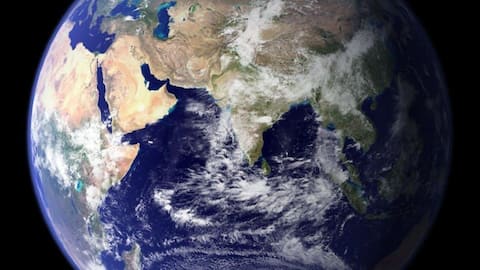Climate crisis can impact Earth's rotation and disrupt technology
What's the story
A recent study has found that the ongoing climate crisis is gradually lengthening each day due to the melting of polar ice, altering Earth's shape. Scientists have emphasized that this phenomenon showcases how human activities are altering Earth, competing with natural processes that have been in place for billions of years. This millisecond-scale extension in day length could potentially disrupt technologies reliant on precise timekeeping, such as internet traffic, financial transactions, and GPS navigation systems.
Accelerated process
Human-induced global heating accelerates day lengthening
Historically, the Earth's day has been gradually lengthening due to the moon's gravitational pull on our planet's oceans and land. However, human-induced global heating has expedited this process by melting the Greenland and Antarctic ice sheets. This melting redistributes water from high latitudes into the world's oceans, resulting in more water in seas closer to the equator. Consequently, Earth becomes more oblate or fatter, which slows its rotation and further extends each day.
Fundamental alteration
Human impact on Earth's rotation and movement
Professor Benedikt Soja of ETH Zurich in Switzerland has explained the profound impact of human activities on Earth. He remarked that humans can observe their impact on the entire Earth system, affecting not just local temperature rises but also fundamentally altering its movement in space and rotation. Soja added that this significant effect has been achieved within a mere 100 or 200 years due to carbon emissions.
Technological disruption
Timekeeping technologies at risk due to climate impacts
Human timekeeping, which relies on the extreme precision of atomic clocks, is being threatened by factors such as lunar tides and climate impacts. These factors cause variations in the exact time of a day - one rotation of Earth. Such differences must be accounted for in data centers that manage internet communications, financial transactions, and navigation systems for satellites and spacecraft. The slight change in day length could potentially disrupt these technologies.
Research findings
Study reveals accelerated rate of day lengthening
The research, published in the Proceedings of the National Academy of Sciences of the USA, used observations and computer reconstructions to assess the impact of melting ice on day length. Between 1900 and 2000, the rate of day lengthening ranged from 0.3 to 1.0 millisecond per century (ms/cy). Since 2000, accelerated ice melting has increased this rate to 1.3 ms/cy. Researchers anticipate this rate will stabilize around 1.0 ms/cy in the coming decades, even with substantial greenhouse gas reductions.
Future impact
Future predictions and implications of day lengthening
If greenhouse gas emissions continue unabated, the rate of day lengthening could reach 2.6 milliseconds per century by 2100, surpassing lunar tides as the primary factor affecting long-term day length variations. Dr. Santiago Belda from the University of Alicante noted that the study confirms Greenland and Antarctica's ice loss directly extends our days. This change has significant implications for timekeeping and modern technologies like GPS.
